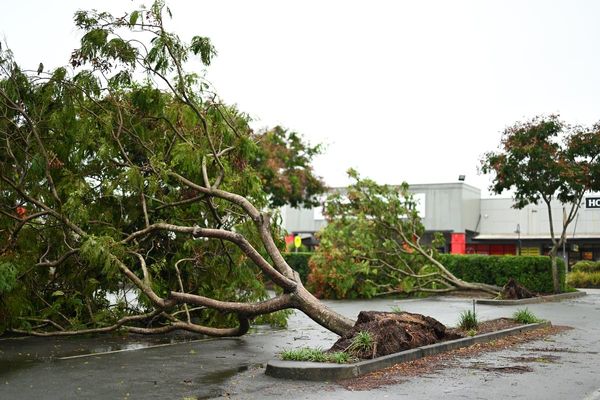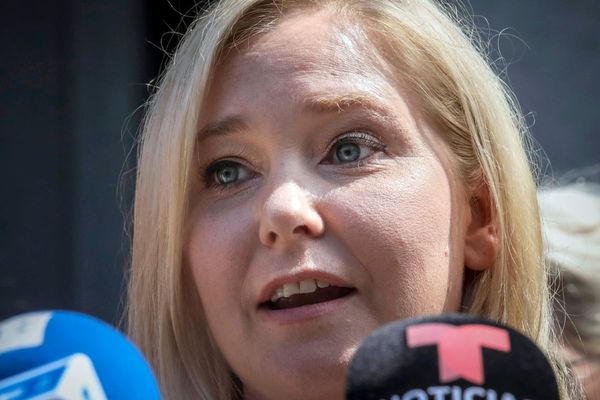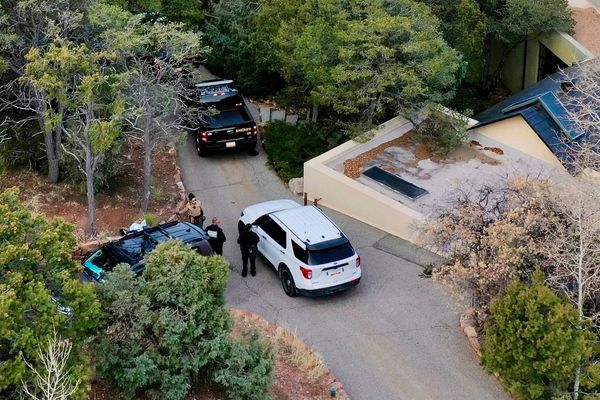
Over the course of a 40-year career making documentaries that shook the Czech Republic – but have gone largely unnoticed outside her native country – film-maker Helena Třeštíková has set one international record that is hard to dispute: she is likely to be the only director in world cinema who was robbed by her own protagonist.
In 1992, while working on one of her trademark long-term “time-lapse documentaries” about juvenile delinquent René Plášil, she had to travel to Germany for work and packed off her husband and their two children to the countryside for the weekend. René somehow got wind of the apartment being empty, broke down the triple-locked door and made off with all the electrical hardware, some antique furniture and the kids’ piggy banks.
“I could have finished shooting there and then,” Třeštíková says on a video call from Prague. “I could have said: ‘Fuck you, I don’t want to see you ever again.’ But then I thought that this was such an unusual thing to do that it could have only been done by a really strong personality, and that it would be worth pursuing him further.”
Ploughing on when others would give up in frustration is what the 74-year-old does like few others. Longitudinal film-making is a perennial critics’ favourite. Richard Linklater won frantic acclaim and a fistful of awards for capturing the life of his protagonist over 12 years in Boyhood. Michael Apted’s Up series, tracking 14 British people for over 50 years, and German documentary The Children of Golzow, which followed people from the same Brandenburg village between 1961 and 2007, are usually held up as stand-out examples of the same genre. But Třeštíková’s stamina for long-term observational studies is something else. Over the last four decades, she has made more than 30 time-lapse documentaries – now the subject of a retrospective on streaming platform True Story.
In 2007, she served as the Czech Republic’s culture minister after being nominated for the role by the film-makers’ union – and lasted less than three weeks. But her commitment to her art is unwavering. She is usually juggling 20 separate projects at any point, and financing them is a constant headache. “You need the money straight away but you can only promise to deliver the results years in the future,” she says. “So there were a few projects that failed. But I always did my best to fight on.”

Třeštíková chanced upon her method in 1980, when Czechoslovakian authorities were concerned about high divorce rates among young married couples. A psychiatrist friend suggested she find six pairs of newlyweds at the registry office and follow them over the next six years. Her findings weren’t comfortable for the regime: while only one couple annulled their vows and a shortage of housing proved a source of tension in all of the relationships as young families were forced to share apartments with over-protective parents-in-law. Třeštíková had some run-ins with the state censor, and was required to cut out a scene in which a couple watch an ice hockey match featuring a player who had since run off to the west. But Marriage Stories got the go-ahead as a six-part series, and proved a sensation.
“During the Communist regime, films on TV were highly ideological, romanticising portraits of the heroes of socialist work,” she says. “And suddenly here was this film about ordinary lives, without embellishment, and it was almost a miracle.”
Because Třeštíková pays attention for long enough, her films yield drama from what might otherwise appear to be the most ordinary of life stories. One of the six married couples in Marriage Stories, Ivana and Václav, initially seem like outliers. They are dynamic young architecture students who deal with the housing crisis by dividing up their tiny apartment in ingenious ways. Václav makes architectural drawings while their toddler plays under his table and Ivana does embroidery in the kitchen. They open a furniture shop, have four more children, build their own house and never stop smiling. And then, 30 years into their marriage, 30 years into filming, everything unravels: the wedding of their daughter is called off, Ivana has a breakdown, kitchen knives are pointed at throats and Václav is arrested by police. There’s a happy ending of sorts, though how conclusive it is remains unclear.
The risk inherent in Třeštíková’s method of film-making is never in any “dullness” of her protagonists’ lives, she says. “Every life is interesting enough to produce a story. Literature and film have known this for a long time. The risk is that the protagonist’s story will not be captured.”
The best way to ensure her protagonists talk openly on camera, she says, is for her to be as open with them as possible. She pays interviewees between 1,000 and 2,000 Czech crowns (£35-70) per day of filming, but never tries to set up unusual situations. Ivana and Václav talk in their shop or their home; René Plášil is mostly interviewed sitting in cafes, smoking cigarettes and drinking beer, in between the numerous prison spells that structure his life after his juvenile incarceration.

Třeštíková prepares questions before her interviews but tries to use as few of them during filming as possible, and she lets her subjects have a say in the final edit of each film. “I try to be a sort of partner, rather than a director observing them from far away.”
Yet even if Třeštíková is never caught on camera in her films, it is clear that she changes her subjects by filming them. This is especially apparent in the case of René, her protagonist turned robber. A young man who had begun to rebel after the divorce of his parents, René had first come on to her radar as part of a project about teenage delinquents in the mining town of Libkovice. He stood out because he was not only hellbent on rubbing against the system, but also able to reflect on why he kept ending up in prison cells. He expressed himself in memoirs and short stories. “He was extraordinarily clever, and able to articulate the experience that many of these prisoners were living through,” says Třeštíková.
Their resulting film, released in 2008, invited a level of sympathy. As René stumbles from life behind bars into a post-Soviet world in the early 90s, Třeštíková intercuts her interviews with him with speeches by Václav Havel, the last president of Czechoslovakia and first leader of the new Czech Republic. Havel, like René, was a creative mind who spent time in prison, and there is a sense that her film is really a twin biography: about one Czech man who rises to become a national hero, and one who can’t break free from his chains.

But as the film progresses, Třeštíková also questions whether René’s troubles are purely due to the system. She gets over him breaking into her flat, but when she lends him a camcorder to film his own scenes and the gadget goes missing, there’s a burst of frustration. “Why do you always mess things up?” she admonishes. “I don’t,” he replies, rather pathetically. “They mess themselves up.”
Her most recent film picks up René’s story after the premiere of her first documentary about his life. The fatalistic undertone of its title, René: Prisoner of Freedom, is slightly misleading, because the fame brought to him by the success of the first film does change his life. René’s memoirs are published and inspire a graphic novel, and even though he ends up behind bars again, there are now beautiful young women who adore his writing and wait for him by the prison gates.
The relationships that come out of these meetings rarely last long, but the film ends on a sense that Třeštíková’s project has given René’s life a structure and purpose it may not have otherwise achieved. In the final scene, after the end of yet another promising romance, he likens his story to that of Sisyphus, forever rolling that rock up the hill only to see it tumble down again. “But he goes on with a steady stride, fulfilling his destiny with composure,” René ruminates. “And by accepting his destiny, he becomes stronger than the boulder.”
• René: Prisoner of Freedom is available now on True Story, and the Třeštíková retrospective starts on 23 October.







